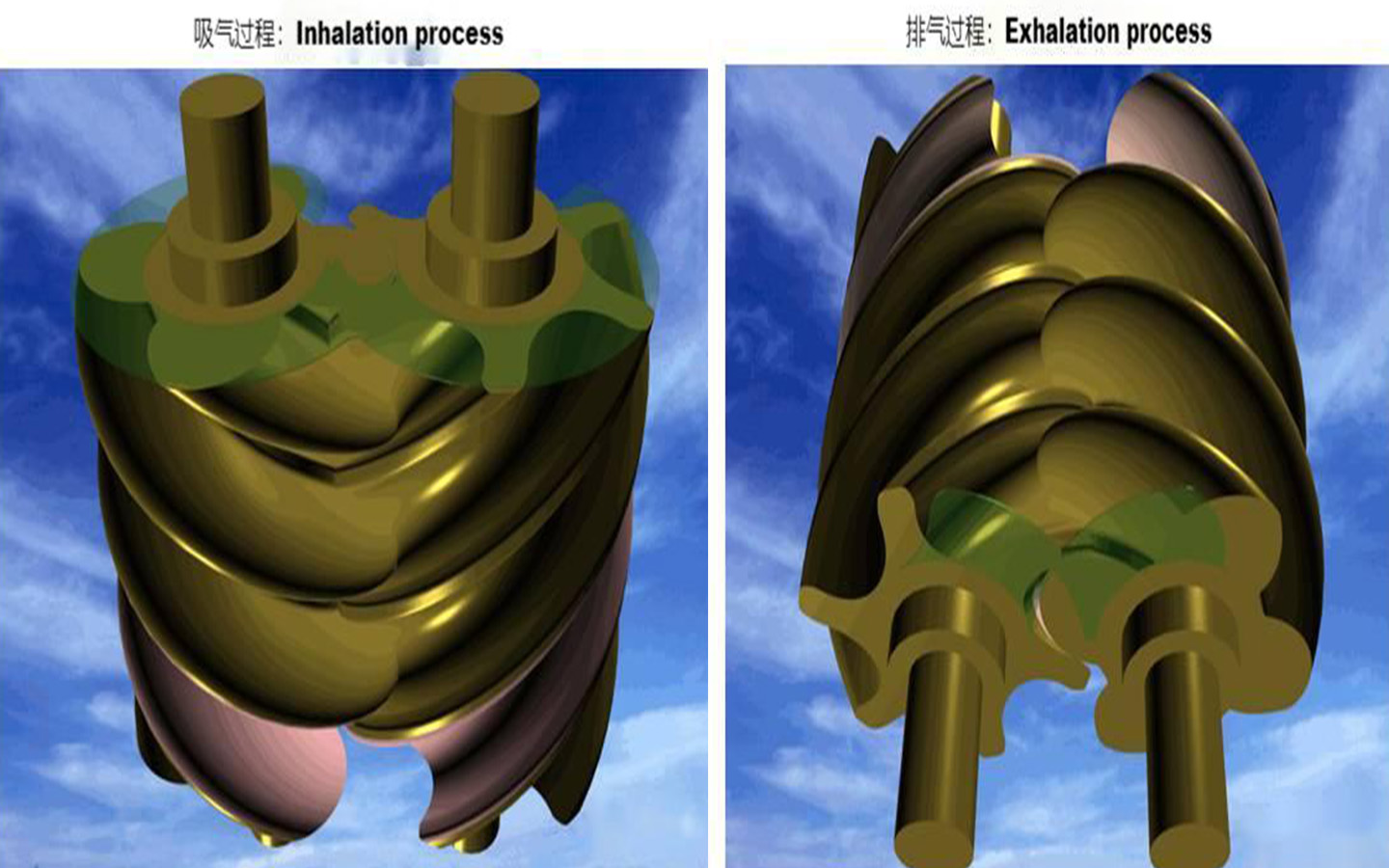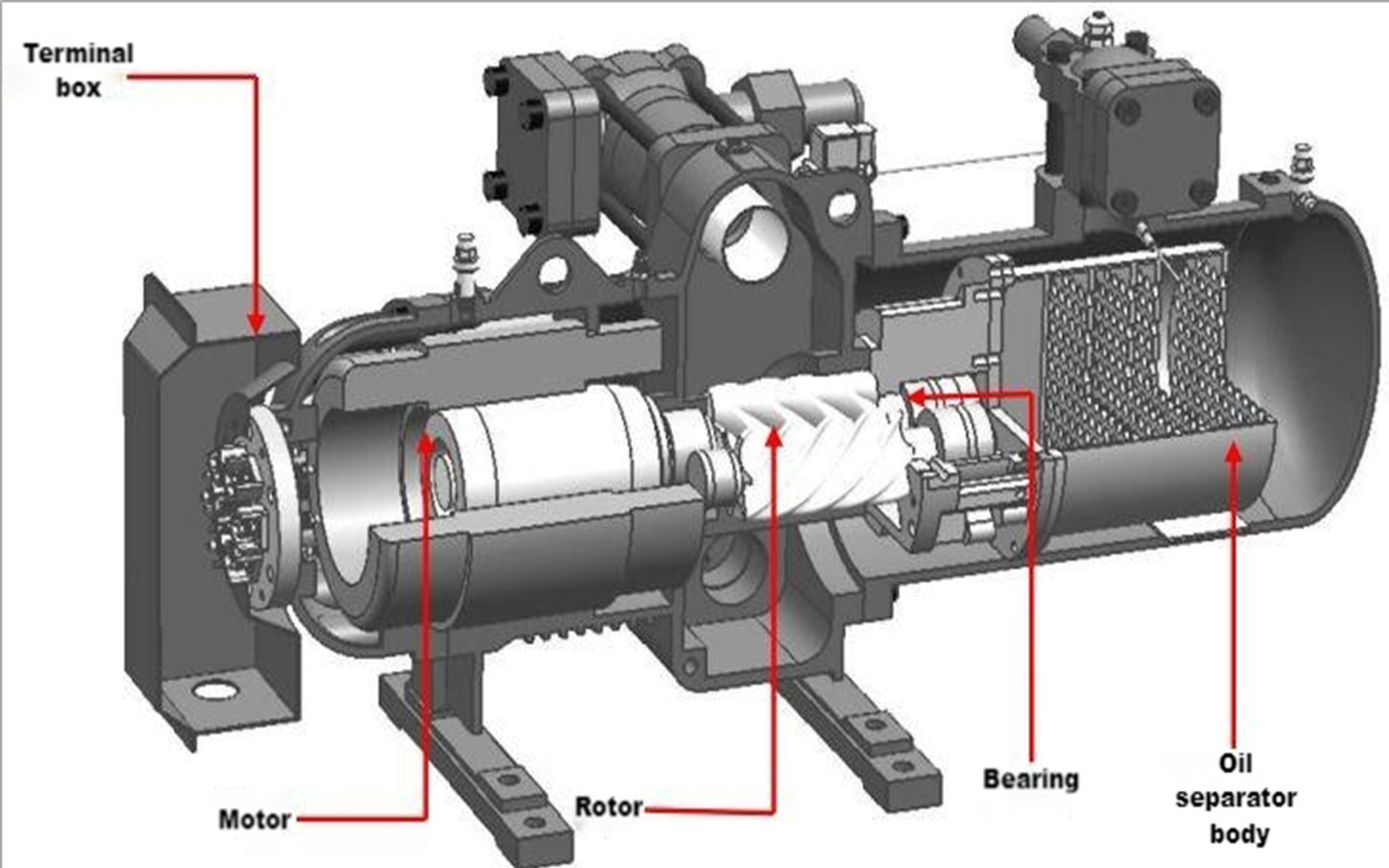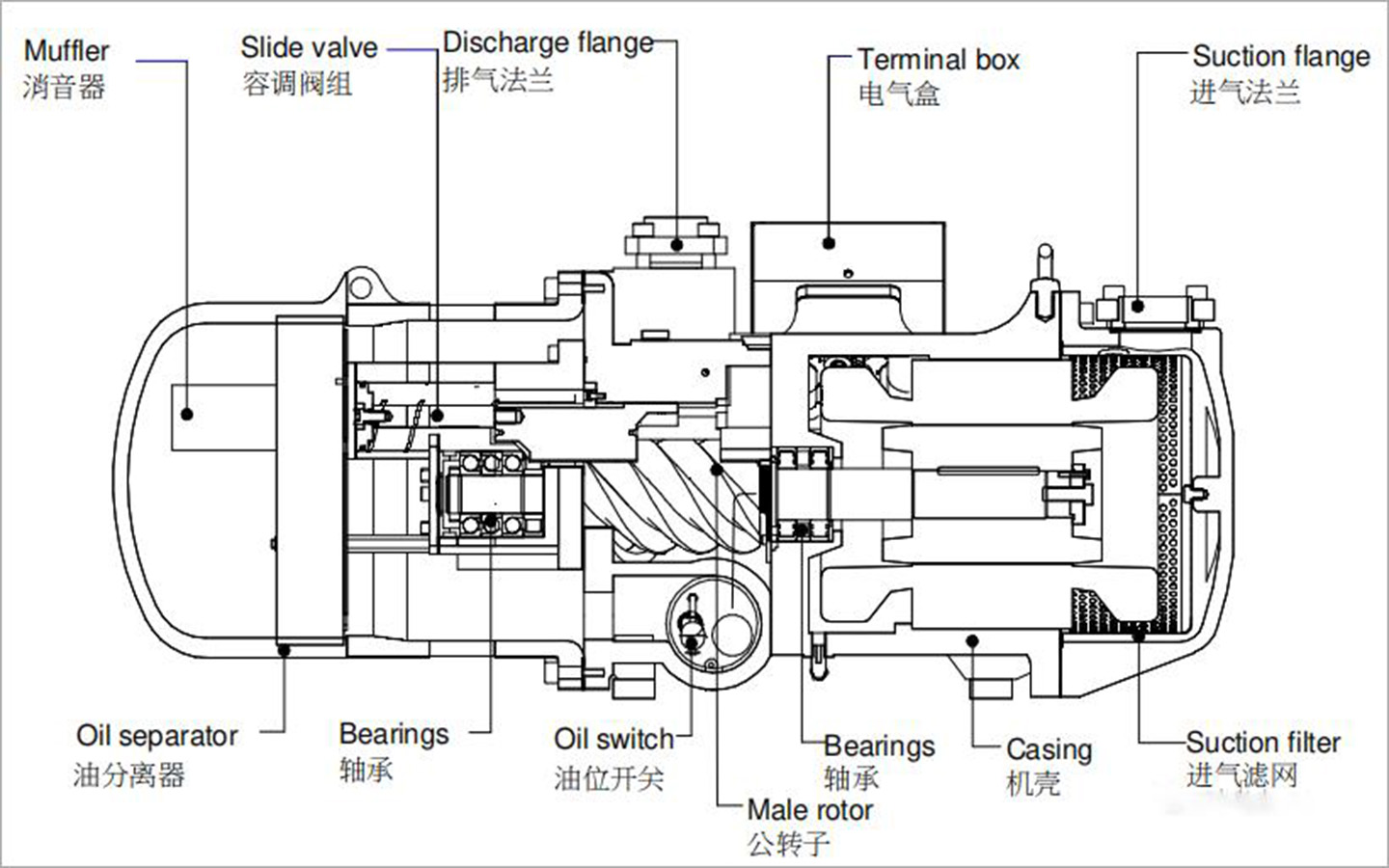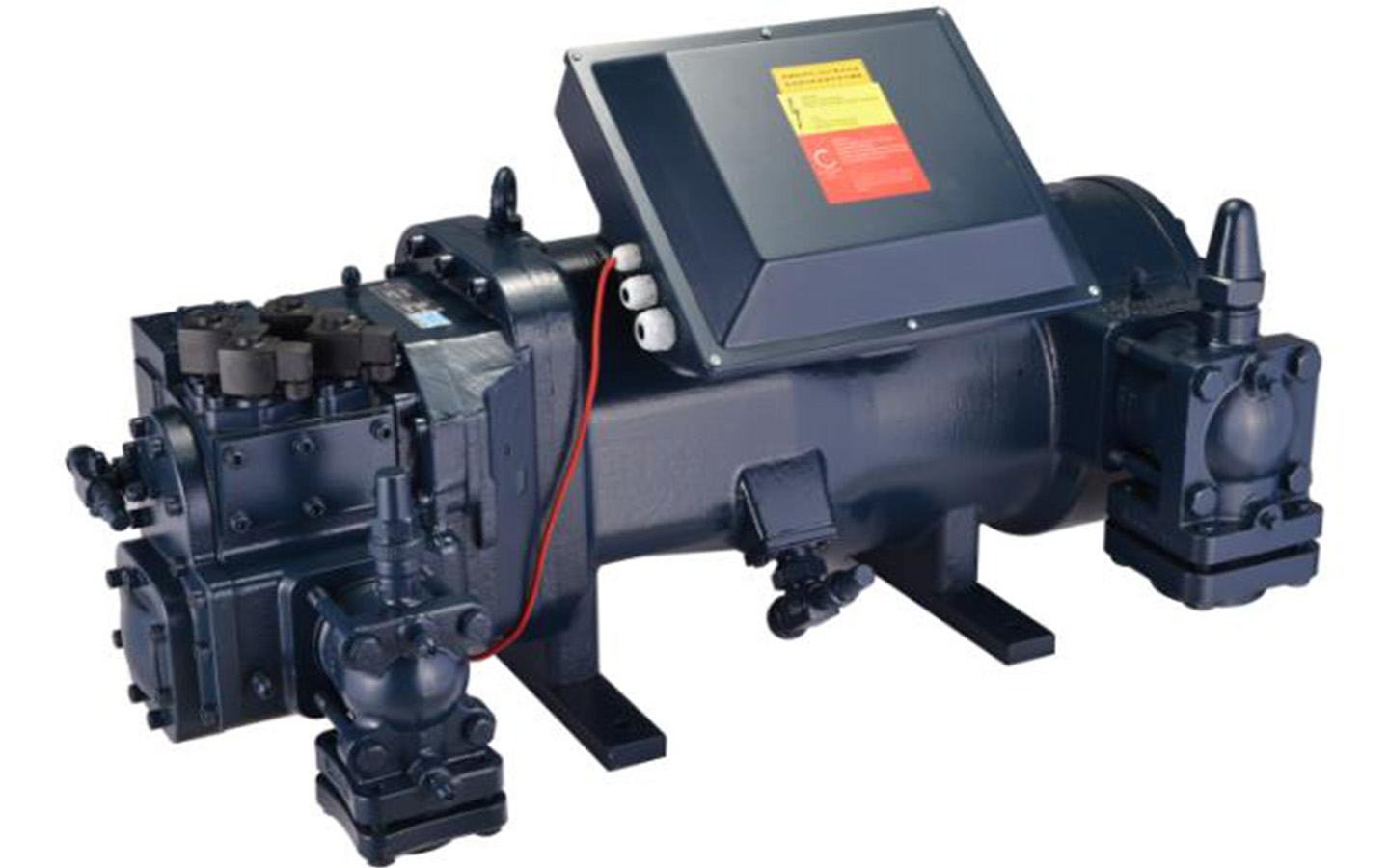Screw refrigeration compressor: working principle and structure composition
The screw compressor is composed of a pair of intermeshing rotors that rotate at a certain transmission ratio, generating periodic V-shaped tooth volume changes to complete the suction, compression, and discharge of the refrigerant gas. The gas enters the volume between the rotors through the suction port. As the volume between the two rotors continues to expand, when it reaches the maximum value, the volume between the teeth disconnects from the suction port, and the suction process ends. During the compression process, the rotors continue to rotate, and the V-shaped tooth volume decreases gradually due to the mutual intrusion of the teeth, thereby compressing the gas. As the rotor rotates and the volume continuously decreases, the compressed gas is sent to the exhaust pipe.

Capacity control device: The capacityCasing: Generally, it is a split-type structure, consisting of a cylinder body, suction end cover, discharge end cover, and two end covers. The material is usually gray cast iron.
Control device is made of cast iron, cast aluminum, or steel plate materials. This mechanism consists of an electric actuator, valve body, and sensor, among others. When the cooling capacity needs to be adjusted, the controller sends a signal to the electric actuator, which rotates the valve body to change the opening of the suction valve, thereby adjusting the cooling capacity.
Thrust bearings: Usually, a pair of thrust bearings are installed on the rotor, and they are mounted in opposite directions after clearance measurement.

Coupling: An important component that transmits power from the motor to the main rotor of the compressor. Due to the high speed of the screw compressor, the precision (coaxiality) of the coupling installation is also high.
Suction end cover: The upper part of the suction end cover has an axial suction port, through which gas enters the compressor.
Discharge end cover: The lower port of the discharge end cover is the axial exhaust port for gas compression. The outer side of the main bearing hole on the discharge end cover is equipped with a thrust bearing, and the outer ring of the thrust bearing is pressed on the discharge end cover with a bearing cover.

1. High speed, light weight, and small size.
2. No reciprocating mass inertia, good dynamic balance, and smooth operation.
3. Simple structure, fewer components, and fewer vulnerable parts.
4. The displacement is almost unaffected by the discharge pressure and can maintain high efficiency over a wide operating range.
5. Screw compressors use slide valve regulation, allowing for stepless energy adjustment.
6. Screw compressors are not sensitive to liquid entry, have low discharge temperature, and high single-stage pressure ratio.

Screw refrigeration compressor: selection
As the power source of refrigeration equipment, the screw refrigeration compressor’s main function is to compress gas or vapor into a high-pressure state and transport it to the required location. Choosing the right compressor is crucial to ensure stable operation of the system and improve efficiency. However, there are some things you need to pay attention to when choosing a compressor to ensure you get the right equipment. This article will explain what you need to pay attention to when choosing a compressor.
1. Type of refrigerant: Different refrigerants are suitable for different types of compressors. Therefore, it is necessary to clarify the type of refrigerant required by the system and select the corresponding compressor.
2. Compressor displacement: Choose an appropriate compressor according to the needs of the system. If the displacement is too large or too small, the compressor will not work efficiently.
3. Energy efficiency noise: You can evaluate the energy efficiency of the compressor by viewing its energy efficiency standards and energy consumption data. Choosing a compressor with higher energy efficiency can reduce energy consumption and operating costs.
4. Reliability: The reliability of the compressor can be assessed by understanding the credibility of the manufacturer and brand. Choosing a more reliable compressor can reduce downtime and repair costs.
5. Reliability and maintenance: Consider the reliability and maintenance requirements of the compressor and choose equipment with good reliability and easy maintenance to reduce maintenance costs and downtime.

 Español
Español Русский
Русский Tiếng Việt
Tiếng Việt 中文
中文 suomi
suomi Français
Français Português
Português English
English Deutsch
Deutsch Français
Français Español
Español Italiano
Italiano Português
Português Pусский
Pусский


